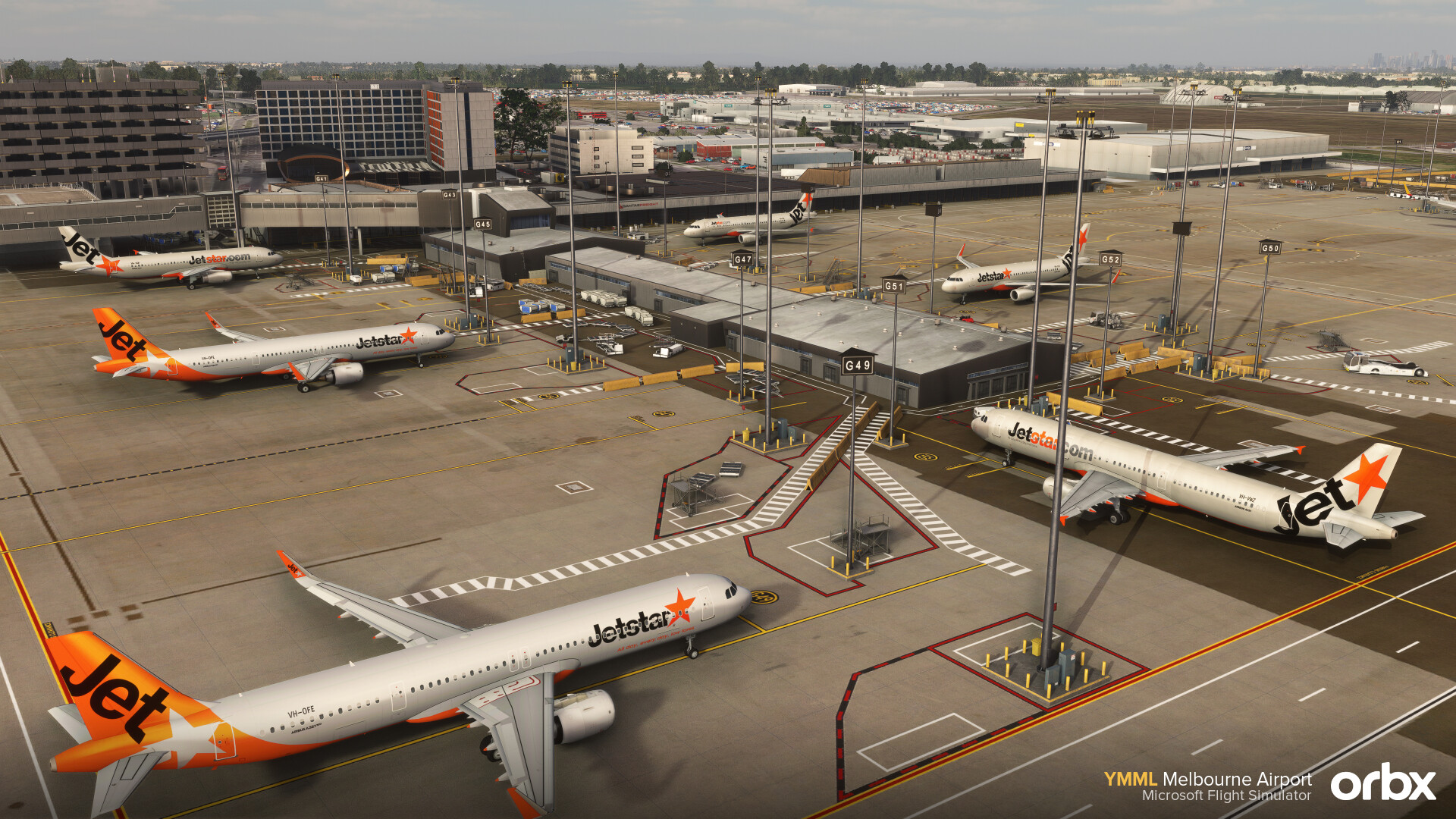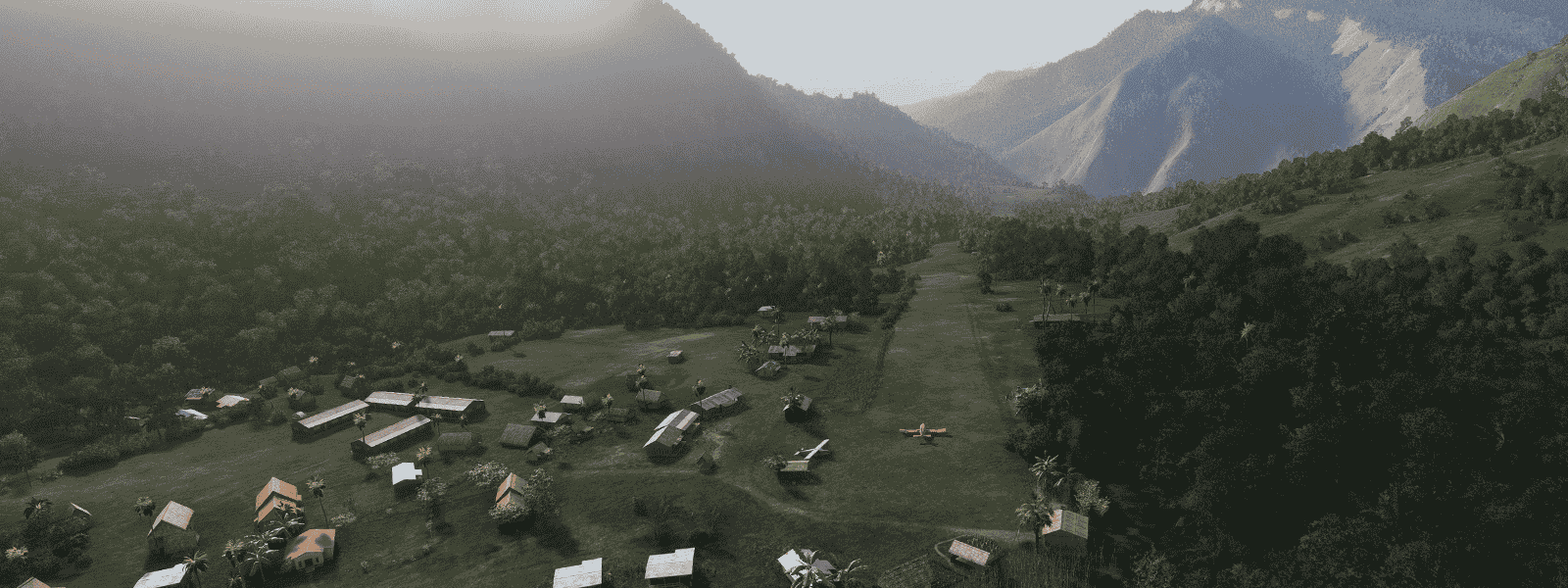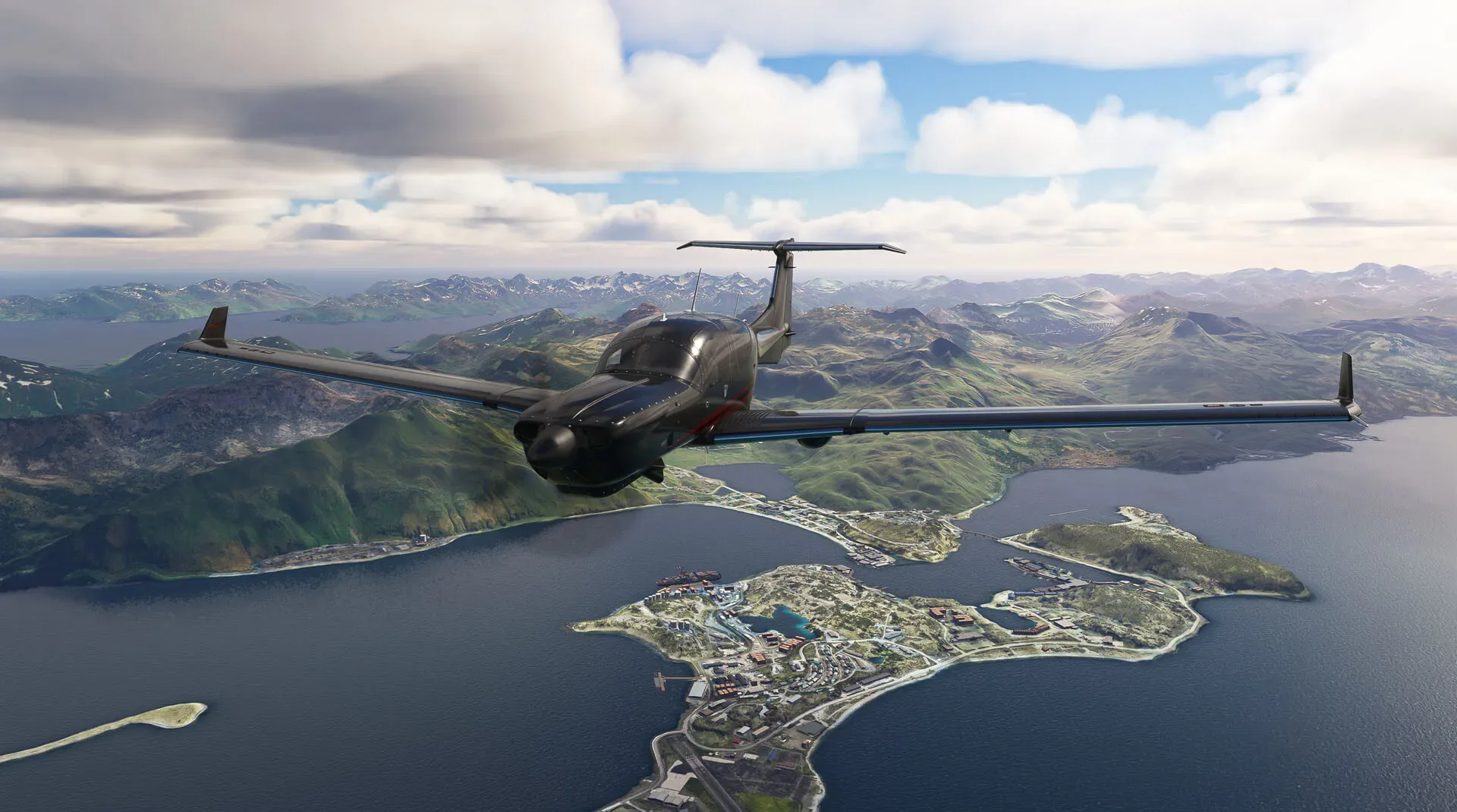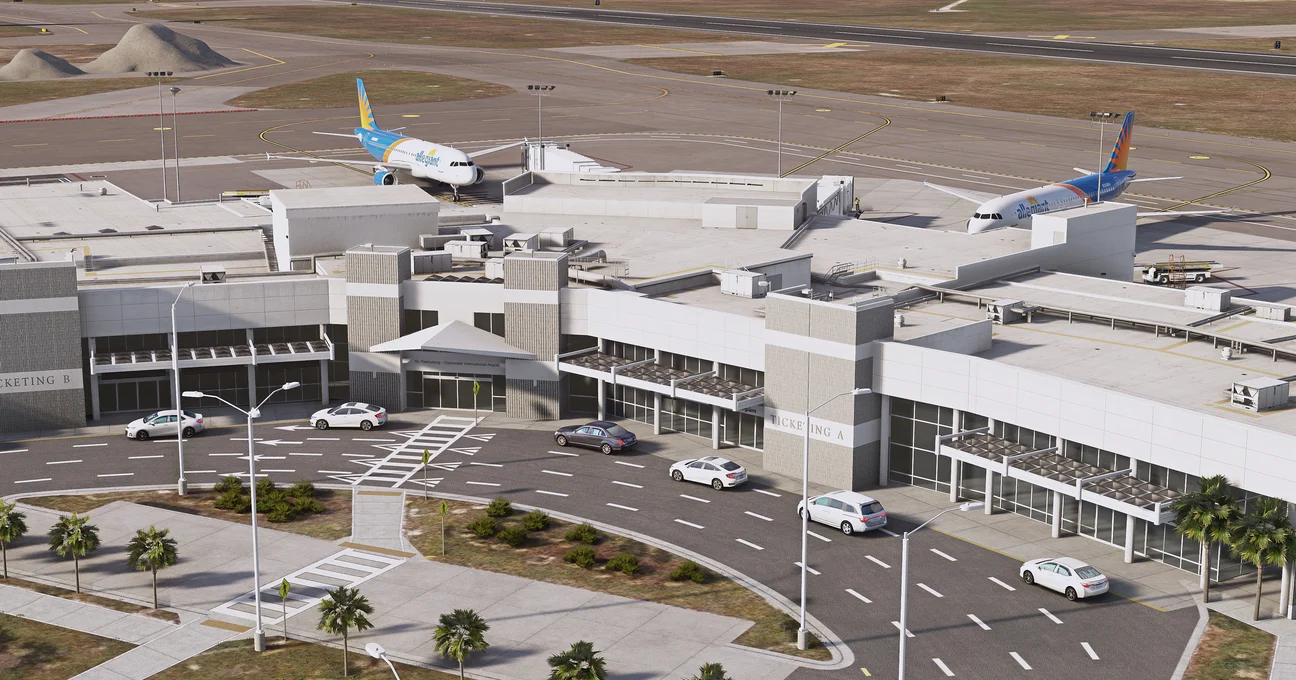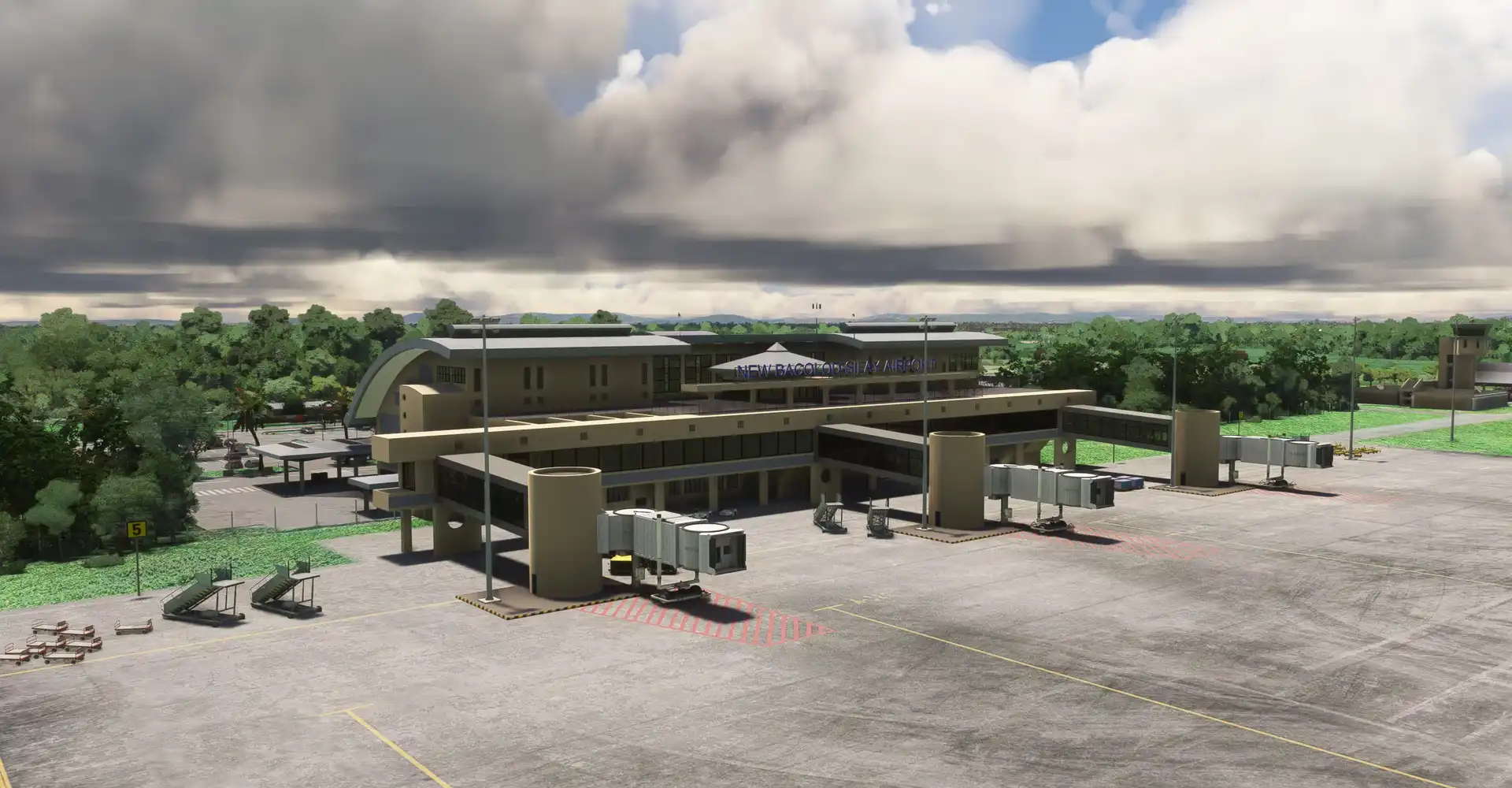Orbx Releases Melbourne Airport for MSFS
June 19, 2023
Orbx has recently released their rendition of Melbourne Airport (YMML) for Microsoft Flight Simulator, serving the city of Melbourne in Australia with a yearly average of 25 million passengers. It is the second busiest airport in the country!

Built in the 60s and opened in 1970, it replaces Essendon Airport (Orbx’s home) as the city’s main airport due to its relatively short runways, small terminals, and its expansion limitations that were a consequence of the urban development around the area.
During its first year of operations, Melbourne only handled international traffic, handling 155,275 international passengers that year and six airlines.

It originally featured three connected terminals, an international at the center, a terminal for Ansett to the south, and one for Trans Australia Airlines to the north. It could withstand 8 Boeing 707s and a rate of 500 passengers per hour, with expansion work three years later to comport the Boeing 747.

It wasn’t long until the passenger figures increased drastically, forcing further expansion: the Ansett terminal, domestic, got bigger, followed by an upgrade to the international terminal in 1993 and the opening of a new three-level concourse in 1995, with ten additional jetways.

In 1997, Melbourne was privatized, on a 50-year long-term lease, followed by a series of upgrades and improvements, including the construction of a multi-story carpark with 3,100 parking spaces, a 276-room hotel, and the expansion of the Qantas domestic terminal with a second pier and nine additional stands.

In 2005, the airport underwent more construction work to become A380-ready, with a runway widening, the addition of dual jetbridges, a terminal extension, and a subsequent expansion of terminal 2 in 2006 and 2008, massively increasing its passenger handling capabilities.

The airport has 68 gates, 53 used for domestic operations and 15 for international.

The airport is a hub for Jetstar (Adelaide, Auckland, Ayers Rock, Ballina, Bangkok–Suvarnabhumi, Brisbane, Busselton, Cairns, Canberra, Christchurch, Darwin, Denpasar, Gold Coast, Hamilton Island, Hobart, Ho Chi Minh City, Honolulu, Launceston, Newcastle, Perth, Phuket, Proserpine, Queenstown, Singapore, Sunshine Coast, Sydney, Townsville), Qantas (Adelaide, Alice Springs, Auckland, Ballina, Brisbane, Broome, Cairns, Canberra, Christchurch, Dallas/Fort Worth, Darwin, Delhi, Denpasar, Gold Coast, Hamilton Island, Hobart, Hong Kong, Jakarta–Soekarno-Hatta, London–Heathrow, Los Angeles, Perth, Queenstown, Singapore, Sunshine Coast, Sydney, Wellington), Rex Airlines (Adelaide, Brisbane, Burnie, Canberra, Devonport, Gold Coast, King Island, Merimbula, Mildura, Mount Gambier, Sydney, Wagga Wagga), and Virgin Australia (Adelaide, Ballina, Brisbane, Cairns, Canberra, Darwin, Denpasar, Gold Coast, Hamilton Island, Hobart, Launceston, Nadi, Newcastle, Perth, Queenstown, Sunshine Coast, Sydney). The visitor list includes Air China, Air India, Air New Zealand, Cathay Pacific, China Airlines, LATAM Chile, Singapore Airlines, United Airlines, and more.
The scenery features an accurate rendition of the airport, with custom ground textures, PBR texturing, interior terminal modeling of departure lounges, VDGS, custom traffic animations, crisp satellite imagery, custom ground clutter, custom POIs, LOD optimization, and a custom GSX profile.
It’s available on OrbxDirect for roughly $23.92, requiring at least 6.77 GB of free hard disk space to install.
Stay tuned to Threshold for more flight simulation news!
Share this page
More Reads:
COMMENT ADVISORY:
Threshold encourages informed discussion and debate - though this can only happen if all commenters remain civil when voicing their opinions.
